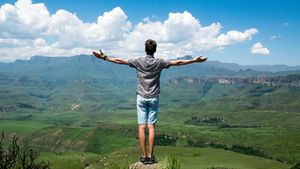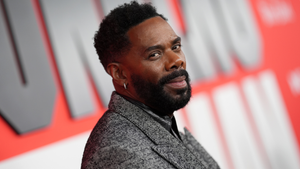CONTACTCAREER OPPORTUNITIESADVERTISE WITH USPRIVACY POLICYPRIVACY PREFERENCESTERMS OF USELEGAL NOTICE
© 2025 Pride Publishing Inc.
All Rights reserved
All Rights reserved
By continuing to use our site, you agree to our Privacy Policy and Terms of Use.
San Francisco is not so much a city as a collection of small villages. A 10-minute walk will show you completely different worlds; think, for instance, of the cultural, social and architectural distinctions between such near-neighbors as the Castro and the Mission, or Chinatown and the Financial District. These differences are part of the joy of The City and a characteristic immediately evident to tourists. The neighborhoods are much more sharply defined than they are in most North American cities, and the compact nature of the city (hills notwithstanding) means these discrete areas are often just a short walk apart.
The Castro is, of course, the gay/lesbian Mecca of San Francisco (and perhaps the world). Though it's not as central to gay life in San Francisco than it once was, it's still the city?s queer hub. Sheer demographic numbers mean that there?s a gay presence throughout the City. As gays and lesbians have achieved some amount of political power and a great deal of visibility, they have become a part of the fabric of life here rather than a purely ghettoized presence. Beyond the Castro and some spots South of Market, there aren't a lot of readily definable "gay areas"
Recent years have seen many changes in the texture of gay/lesbian life in San Francisco; Polk Street, for instance, once a congregating point for gay men second only to the Castro, has very little gay presence these days. And while certain legendary bars remain in business on Folsom Street and environs, the area now known as South of Market has become ever more yuppified, with galleries and shops moving in where leather and chains used to reign.
No city can remain static, and San Francisco?s neighborhoods will continue to weather all sorts of shifts, commercial, cultural, and natural alike. San Francisco's extraordinary collection of neighborhoods remain a singular and alluring feature of this town of less than one million people. These districts manage to consistently capture the imaginations of visitors and arouse the fierce loyalty of residents. Let's take a somewhat circular route around the various districts, beginning with, well, the gayest of all.
THE CASTRO
The Castro is the country's most fabled gayborhood. It holds a mythologized place in American popular consciousness as the ground zero of gay liberation and its subsequent orgiastic heyday of the seventies. In the wake of the AIDS epidemic, the area has plenty of ghosts. At the epidemic?s darkest hour, around 1986, scores of bars and businesses, many of them in the Castro, literally lost all of their patrons and owners to the disease. Today, a stroll down Castro, past its dark bars that pump out cowbell-ringing disco and refrigerated air (along with the whiff of draft beer and poppers) at noon, provides a glimpse into a street of survivors living side-by-side with younger generations of gay men and lesbians.
But The Castro (basically, Castro Street and surrounding blocks heading south from Market Street) has been rebounding for years, and a stroll through this area -- still one of the gayest on earth -- is enough to warm the heart of gay and lesbian visitors. The Castro Theatre is the area's most cherished landmark, site of the annual SF Gay and Lesbian Film Festival. Patrons from bars and restaurants spill out onto the street. The well-known local spots that have survived, even thrived, unabashedly proclaim a gay presence. Noe Valley and Twin Peaks, which border the Castro to the east and west respectively, don't hold many tourist attractions, though the former is home to a large concentration of middle-class lesbians, and the latter offers the best panoramic views in town.
THE MISSION
Largely Latino, the area has resisted the yuppie influx more successfully than many other city neighborhoods and retains a distinctive character. The centerpiece of this large district east of the Castro is Mission Dolores, San Francisco's oldest building. The vast spread of the neighborhood's streets, especially along Valencia Street between 16th and 24th streets, offers thrift stores, funky cafés, and book shops, as well as more stolid family-oriented spots and some of the best restaurants in the city, plus a large lesbian population. It can be a bit seedy in places at night, but is one of San Francisco's most vibrant neighborhoods.
The Mission Murals provide arguably the most exciting examples of street art in the city. Carnaval (Harrison between 18th and 19th) and all of Balmy Alley (between Treat and Harrison, 24th and 25th) showcase beautiful mural work, though captivating murals can be seen all over the neighborhood.
Wanna come home with a really long-lasting memento? Stop in at lesbian-owned Black and Blue Tattoo (381 Guerrero St, at 16th St; 415-626-0770; open noon-7 p.m.) for a tattoo or a branding. What visit to off-beat San Francisco would be complete without checking out Paxton Gate (824 Valencia St; 415-824-1872), where you can buy mounted butterflies and beetles, exotic plants, and hard-to-find English gardening tools.
Part One | Part Two | Part Three | Part Four | Part Five | Part Six
Part Seven | Part Eight
San Francisco: Introduction
San Francisco: Where to Stay
San Francisco: Where to Eat
San Francisco: Where to Play/Meet
San Francisco: Where to Shop
San Francisco: Resources
From our Sponsors
Most Popular
Just in Time for Pride – The 15 Gayest Cities in the World in 2023
April 12 2023 6:47 PM
The 13 Least Visited National Parks
January 07 2023 5:00 AM
Get Soaked! with These 35+ Steamy Pool Pics From This Year’s White Party
May 25 2023 9:29 AM
20 Thirsty Pics of #SniffiesRush Campaign Celebrating Frat Life
December 16 2022 3:19 PM
25 Thirsty Pool Party Pics from White Party Palm Springs 2022
April 14 2023 5:55 PM
Sniffies Reveals Horniest Cities
December 22 2022 4:15 PM
15 Thirsty Pics of Moot Lingerie for Men
March 21 2023 7:41 AM
The 7 Best Nude Beaches for Gays in the U.S.
June 09 2022 4:00 AM
The Most Dangerous (& Safest) Countries for LGBTQ+ Travel
March 22 2023 5:00 AM
Outtraveler: Featured Video
Latest Stories
A gay solo traveler goes bear-hunting in Barcelona
November 13 2025 4:31 PM
More than a month: Prioritizing LGBTQ+ health year-round
October 15 2025 12:27 PM
UNITY at Sphere is the perfect Las Vegas attraction for gay tourists
October 03 2025 5:09 PM
Malta is the secret Pride destination where gays are going wild
September 18 2025 4:47 PM
What is a Jubilee? These Catholics just became the first LGBTQ+ people to participate
September 08 2025 12:49 PM
Marriage equality will be banned in these 31 states if Obergefell is overturned
September 08 2025 10:40 AM
Explore the camp, parties, and parade of Provincetown Carnival 2025
September 05 2025 7:03 PM
My big gay Broadway summer
August 27 2025 9:27 AM
Explore Zurich with Swiss style icon Susanne Bartsch
August 25 2025 9:46 AM
Splash House is the secret Pride festival where gays can truly let loose
August 22 2025 9:00 AM
When love sinks, set sail for the Hudson Navigator
August 15 2025 6:00 AM
Need an escape from American anxiety? Consider Colombia.
July 16 2025 11:47 AM
This heavenly hotel in the heart of Hell's Kitchen is the perfect oasis
June 26 2025 6:00 AM
Top 10 LGBTQ+ beach towns perfect for Pride and summer fun
June 05 2025 1:54 PM
Checking out: nhow London, the city’s coolest hotel
June 02 2025 8:45 AM
Cruising the world helped this gay couple find lasting love
May 31 2025 2:45 PM
Gays went feral at an iconic Pride celebration in Pensacola, Florida
May 30 2025 6:00 AM
Wilderness, woods, and Wigstock: Drag icons light up the Catskills
May 28 2025 12:17 PM
Out and About with Christian Cooper
May 28 2025 11:07 AM











































































